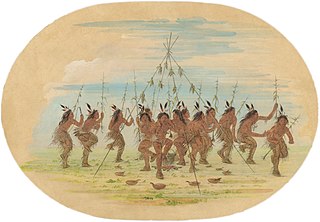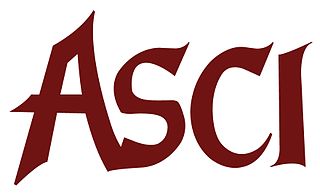Erectile dysfunction (ED), also referred to as impotence, is a form of sexual dysfunction in males characterized by the persistent or recurring inability to achieve or maintain a penile erection with sufficient rigidity and duration for satisfactory sexual activity. It is the most common sexual problem in males and can cause psychological distress due to its impact on self-image and sexual relationships.

Medicine is the science and practice of caring for patients, managing the diagnosis, prognosis, prevention, treatment, palliation of their injury or disease, and promoting their health. Medicine encompasses a variety of health care practices evolved to maintain and restore health by the prevention and treatment of illness. Contemporary medicine applies biomedical sciences, biomedical research, genetics, and medical technology to diagnose, treat, and prevent injury and disease, typically through pharmaceuticals or surgery, but also through therapies as diverse as psychotherapy, external splints and traction, medical devices, biologics, and ionizing radiation, amongst others.

A medicine man or medicine woman is a traditional healer and spiritual leader who serves a community of Indigenous people of the Americas. Individual cultures have their own names, in their respective languages, for spiritual healers and ceremonial leaders in their particular cultures.

Testosterone is the primary male sex hormone and androgen in males. In humans, testosterone plays a key role in the development of male reproductive tissues such as testicles and prostate, as well as promoting secondary sexual characteristics such as increased muscle and bone mass, and the growth of body hair. It is associated with increased aggression, sex drive, dominance, courtship display, and a wide range of behavioral characteristics. In addition, testosterone in both sexes is involved in health and well-being, where it has a significant effect on overall mood, cognition, social and sexual behavior, metabolism and energy output, the cardiovascular system, and in the prevention of osteoporosis. Insufficient levels of testosterone in men may lead to abnormalities including frailty, accumulation of adipose fat tissue within the body, anxiety and depression, sexual performance issues, and bone loss.
An aphrodisiac is a substance alleged to increase libido, sexual desire, sexual attraction, sexual pleasure, or sexual behavior. These substances range from a variety of plants, spices and foods to synthetic chemicals. Natural aphrodisiacs like cannabis or cocaine are classified into plant-based and non-plant-based substances. Synthetic aphrodisiacs include MDMA and methamphetamine. Aphrodisiacs can be classified by their type of effects. Aphrodisiacs that contain hallucinogenic properties like bufotenin have psychological effects on a person that can increase sexual desire and sexual pleasure. Aphrodisiacs that have smooth muscle relaxing properties like yohimbine have physiological effects on a person that can affect hormone levels and increase blood flow.
Premature ejaculation (PE) is a male sexual dysfunction that occurs when a male expels semen soon after beginning sexual activity, and with minimal penile stimulation. It has also been called early ejaculation, rapid ejaculation, rapid climax, premature climax and (historically) ejaculatio praecox. There is no uniform cut-off defining "premature", but a consensus of experts at the International Society for Sexual Medicine endorsed a definition of around one minute after penetration. The International Classification of Diseases (ICD-10) applies a cut-off of 15 seconds from the beginning of sexual intercourse.

Prognosis is a medical term for predicting the likelihood or expected development of a disease, including whether the signs and symptoms will improve or worsen or remain stable over time; expectations of quality of life, such as the ability to carry out daily activities; the potential for complications and associated health issues; and the likelihood of survival. A prognosis is made on the basis of the normal course of the diagnosed disease, the individual's physical and mental condition, the available treatments, and additional factors. A complete prognosis includes the expected duration, function, and description of the course of the disease, such as progressive decline, intermittent crisis, or sudden, unpredictable crisis.
Sexual medicine or psychosexual medicine as defined by Masters and Johnsons in their classic Textbook of Sexual Medicine, is "that branch of medicine that focuses on the evaluation and treatment of sexual disorders, which have a high prevalence rate." Examples of disorders treated with sexual medicine are erectile dysfunction, hypogonadism, and prostate cancer. Sexual medicine often uses a multidisciplinary approach involving physicians, mental health professionals, social workers, and sex therapists. Sexual medicine physicians often approach treatment with medicine and surgery, while sex therapists often focus on behavioral treatments.

The Green Corn Ceremony (Busk) is an annual ceremony practiced among various Native American peoples associated with the beginning of the yearly corn harvest. Busk is a term given to the ceremony by white traders, the word being a corruption of the Creek word puskita (pusketv) for "a fast". These ceremonies have been documented ethnographically throughout the North American Eastern Woodlands and Southeastern tribes. Historically, it involved a first fruits rite in which the community would sacrifice the first of the green corn to ensure the rest of the crop would be successful. These Green Corn festivals were practiced widely throughout southern North America by many tribes evidenced in the Mississippian people and throughout the Mississippian Ideological Interaction Sphere. Green Corn festivals are still held today by many different Southeastern Woodland tribes. The Green Corn Ceremony typically occurs in late June or July, determined locally by the developing of the corn crops. The ceremony is marked with dancing, feasting, fasting and religious observations.
A medical specialty is a branch of medical practice that is focused on a defined group of patients, diseases, skills, or philosophy. Examples include those branches of medicine that deal exclusively with children (paediatrics), cancer (oncology), laboratory medicine (pathology), or primary care. After completing medical school or other basic training, physicians or surgeons and other clinicians usually further their medical education in a specific specialty of medicine by completing a multiple-year residency to become a specialist.

A folk healer is an unlicensed person who practices the art of healing using traditional practices, herbal remedies, and the power of suggestion. The term "folk" was traditionally associated with medical and healing practices that weren't explicitly approved by the dominant religious institution. If people didn't seek healing from an approved priest or religious figure, they would seek the help of the local folk healer. Folk healers, despite their technical illegitimacy, were often viewed as being more involved with the healing process and made their patients more comfortable than other practitioners. With modern medicine being preferred, some look towards folk healers to get consoled from the sacred use of traditional medicine. "Appalachian folk healing goes by many names, depending on where it’s practiced in the region and who’s doing the practicing: root work, folk medicine, folk magic, kitchen witchery."

Traditional Tibetan medicine, also known as Sowa-Rigpa medicine, is a centuries-old traditional medical system that employs a complex approach to diagnosis, incorporating techniques such as pulse analysis and urinalysis, and utilizes behavior and dietary modification, medicines composed of natural materials and physical therapies to treat illness.

The human immunodeficiency virus (HIV) is a retrovirus that attacks the immune system. It can be managed with treatment. Without treatment it can lead to a spectrum of conditions including acquired immunodeficiency syndrome (AIDS).

Reproductive medicine is a branch of medicine concerning the male and female reproductive systems. It encompasses a variety of reproductive conditions, their prevention and assessment, as well as their subsequent treatment and prognosis.
Maya medicine concerns health and medicine among the ancient Maya civilization. It was a complex blend of mind, body, religion, ritual and science. Important to all, medicine was practiced only by a select few, who generally inherited their positions and received extensive education. These shamans acted as a medium between the physical world and spirit world. They practiced sorcery for the purpose of healing, foresight, and control over natural events. Since medicine was so closely related to religion, it was essential that Maya medicine men had vast medical knowledge and skill.

Enclomifene (INNTooltip International Nonproprietary Name), or enclomiphene (USANTooltip United States Adopted Name), a nonsteroidal selective estrogen receptor modulator of the triphenylethylene group acts by antagonizing the estrogen receptor (ER) in the pituitary gland, which reduces negative feedback by estrogen on the hypothalamic-pituitary-gonadal axis, thereby increasing gonadotropin secretion and hence gonadal production of testosterone. It is one of the two stereoisomers of clomifene, which itself is a mixture of 38% zuclomifene and 62% enclomifene. Enclomifene is the (E)-stereoisomer of clomifene, while zuclomifene is the (Z)-stereoisomer. Whereas zuclomifene is more estrogenic, enclomifene is more antiestrogenic. In accordance, unlike enclomifene, zuclomifene is antigonadotropic due to activation of the ER and reduces testosterone levels in men. As such, isomerically pure enclomifene is more favorable than clomifene as a progonadotropin for the treatment of male hypogonadism.

Prehistoric medicine is any use of medicine from before the invention of writing and the documented history of medicine. Because the timing of the invention of writing per culture and region, the term "prehistoric medicine" encompasses a wide range of time periods and dates.

The American Society for Clinical Investigation (ASCI), established in 1908, is one of the oldest and most respected medical honor societies in the United States.

Sexual activities involving men who have sex with men (MSM), regardless of their sexual orientation or sexual identity, can include anal sex, non-penetrative sex, and oral sex. Evidence shows that sex between men is significantly underreported in surveys.

Mytatrienediol, also known as 16α-methyl-16β-epiestriol 3-methyl ether or 16β-hydroxy-16α-methylestradiol 3-methyl ether, is a synthetic steroidal estrogen medication and an estrogen ether which was derived from estriol and was developed for clinical use in the late 1950s but was never marketed. It was investigated as a weak and mildly estrogenic medication for men to treat atherosclerosis, improve serum lipid profiles, and reduce the risk of myocardial infarction. However, while preclinical research supported the profile of mytatriendiol as a weak estrogen, the medication was found in clinical trials to produce estrogenic side effects including feminization, breast pain, and gynecomastia in men similarly and comparably to other estrogens such as ethinylestradiol and conjugated estrogens, and its side effects ultimately precluded its use. The medication was also studied to treat bone pain in patients with multiple myeloma, metastatic bone disease, and osteoporosis, with effectiveness seen.













